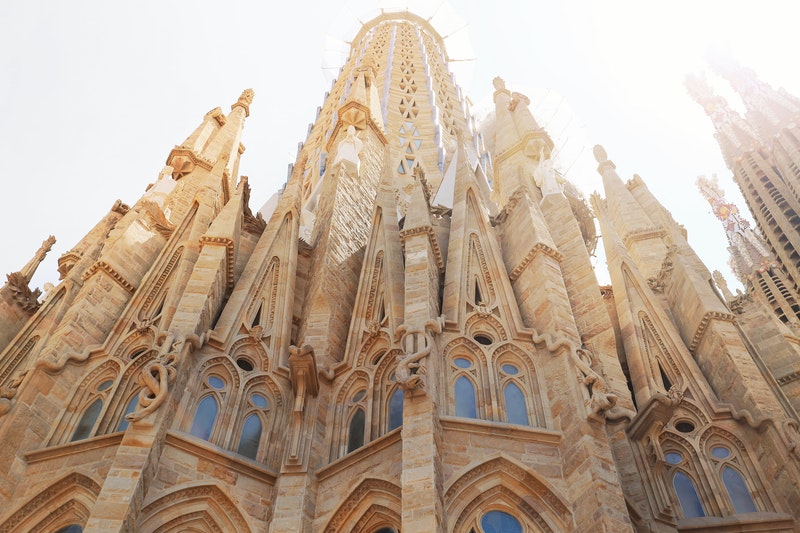Top 5 Architecture Rich European Cities

If you are someone who takes the buildings around you for granted, then you are missing out on one of life’s pleasures. Architecture shapes the way that we live and great architecture can afford us the same pleasure as great art; Goethe described architecture as ‘frozen music’. Great architecture is not confined solely to cities, but it is in the great cities of Europe that you will find the greatest concentration and most diverse examples of buildings which deserve your attention.
Rome
There are enough great buildings in Rome, over 900 churches alone, to keep you occupied for a lifetime. It is of course the architectural legacy of the Roman Empire which dominates most people’s architectural knowledge of the city and the greatest of all Rome’s ancient monuments is the astonishing Colosseum. Built between 70 and 80 CE it is the largest amphitheatre in the world, with capacity for around 65,000 people.
Every bit as astonishing is the Pantheon, the best-preserved Roman monument in the city and one which has been in continuous use since it was first constructed. St. Peter’s Basilica in the Vatican City, designed by the greatest talents of Renaissance Italy, is the largest and most spectacular church in the country.
London
London has been burnt and bombed, torn down and rebuilt throughout the centuries and as a result it is perhaps the most architecturally diverse city in the world. For many, the city is symbolised by the majestic dome of Saint Paul’s Cathedral, but its skyline is a riot of competition, much of it contemporary, such as Renzo Piano’s strikingly simple, Shard, the tallest building in the city.
The Tower of London is the city’s oldest intact building, dating back the best part of a thousand years and the British Museum, which has the largest covered public square in Europe, was the first public national museum in the world.
Porto
The city that gave port wine to the world is a compact gem which is an architectural mix of the traditional and modern. It is known for its six beautiful bridges which span the Douro river, the most famous of which is the Dom Luis Bridge, built in 1886 it now provides tourists with stunning views of the river and the old town. To the east of the historic centre lies the district of Bonfim, off the tourist trail, it’s a great place to stroll in tranquillity and enjoy the vernacular architecture.
Wherever you are in the city you’ll notice the baroque Clerigos church tower which dominates the city skyline. Nearly as tall and equally impressive is the contemporary irregularity of the Casa da Musica. If you are a Harry potter fan, or even if you are not, be sure to visit the Livaria Lello Bookshop, one of the most beautiful bookshops in the world and inspiration for the architecture of Hogwarts.
Barcelona
The Catalan capital is dominated in the imagination of most visitors by the work of one extraordinary architect: Antoni Gaudi. His Catalan modernism is a highly idiosyncratic architecture of organic forms and brilliantly coloured tiles and his Casa Vicens is regarded as one of the first Art Nouveau buildings in the world.
The architecturally inclined visitor to Barcelona is likely to want to track down the Gaudi masterpieces which adorn the city. The Casa Batllo, with its bone-like pillars and its extraordinary undulating roof and the sprawling wonder of Park Guell are good places to start. The entrance to the park is flanked by fairy tale pavilions from which brightly tiled stairs climb to the Hypostyle Hall with its 100 glistening columns.
Gaudi’s masterpiece is of course the extraordinary supercharged Disneyesque cathedral, the Sagrada Familia; its eighteen towers will not see completion until at least 2026, a century after Gaudi’s death.
Athens
Athens is the birthplace of western architecture, its buildings influencing countless structures throughout Europe from Roman architecture to the Bank of England and Washington’s Capitol. There are fine modern buildings in Athens, but most visitors are going to want to spend their time gazing in wonder at buildings which inspired the architects of the western world.
The Acropolis is home to a clutch of exquisite temples but of course the most magnificent is the ruined splendour of the Parthenon, with its 46 Doric columns, which taper imperceptibly, to give the illusion of straight lines. The Panathenaic Stadium built in 338 BCE is the only stadium in the world built entirely of marble and was the site of the 1896 Olympiad. The Odeon of Herodes Atticus, built in CE 161 is one of the finest Roman theatres in the world. It was restored in 1950 and now hosts a regular programme of entertainment.





